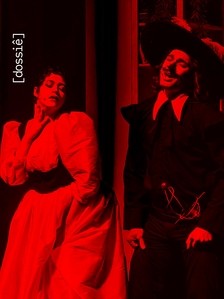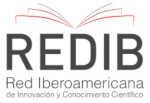Iberê Camargo’s artistic talents in creating the costumes for the ballet “As Icamiabas”
DOI:
https://doi.org/10.26563/dobras.v18i43.1893Keywords:
Icamiabas, Ballet costumes, Iberê Camargo, Legend, MuiraquitãAbstract
The field of fashion is close to that of costume design, not only because of the clothes and accessories used in a characterization, but also because of their representativeness in visually showing the culture and behavior of a society at a given time. In 1959, in Rio de Janeiro, Iberê Camargo carried out a series of costume studies for the ballet “As Icamiabas,” inspired by a set of legends and documents bequeathed by the first chroniclers who were in the Amazon forest and had contact with tribes of warrior women. The objective of this article is to address the representation constructed by Iberê Camargo for the costumes of the ballet “As Icamiabas.” To this end, this article is concerned with presenting the legend, which permeates the Brazilian cultural imagination, and describing how the figures in this artistic ballet were represented. The methodology is based on a bibliographical review and a description of the costumes, based on the accounts found in the literature on the plural dress of native peoples. The results show that Iberê Camargo’s artistic interpretation includes a mixture of elements that are reminiscent of indigenous culture, such as skin paintings, but also incorporates clothes that are not part of the cultural context and imagery of the legend, but are part of the artistic proposal, a ballet show.
Downloads
References
ADICHIE, Chimamanda Ngozi. O perigo de uma única história. Tradução de Juliana Romeu. São Paulo: Companhia das Letras, 2009.
BARTHES, Roland. Mitologias. Rio de Janeiro: Bertrand Brasil, 1993.
BHABHA, Homi K. O local da cultura. Tradução de Myrian Ávila, Eliana Lourenço de Lima Reis, Gláucia Renate Gonçalves. Belo Horizonte: UFMG, 1998.
CARVAJAL, Gaspar de; ROJAS, Alonso de; ACUÑA, Cristobal de. Descobrimentos do Rio das Amazonas. Tradução de C. de Melo Leitão. Série 5ª. Vol. 203. São Paulo: Companhia Editora Nacional, 1941.
CASCUDO, Luísa da Câmara. Dicionário do folclore brasileiro. 12. ed. São Paulo: Global, 2012.
CHEVALIER, Jean; GHEERBRANT, Alain. Dicionário de símbolos, mitos, sonhos, costumes, gestos, formas, figuras, cores, números. Tradução de Vera da Costa e Silva et al. Rio de Janeiro: José Olympio Editora, 1989.
CORAZZA, Sandra Mara. Notas Org. Heuser, Ester Maria Dreher. Caderno de notas 1: Projeto, notas & ressonâncias. Cuiabá: EdUFMT, 2011.
COUTO, Clara Rodrigues. O balé por escrito: preceitos e regras de composição dos balés de corte na França do Antigo Regime (1581-1682). Revista Brasileira de Estudos da Presença, Porto Alegre, v. 12, n. 1, e113668, 2022. Disponível em: https://www.scielo.br/j/rbep/a/zhyBHKByYPykqx3NSVn4hYS/?format=pdf&lang=pt. Acesso em: 18 ago. 2024. DOI: https://doi.org/10.1590/2237-2660113668
FEDERICI, Silvia. Calibã e a bruxa: mulheres, corpo e acumulação primitiva. Tradução do Coletivo Sycorax. São Paulo: Elefante, 2017.
GOVERNO FEDERAL. Manto Tupinambá: Governo Federal celebra retorno do artefato sagrado ao Brasil e reafirma direitos indígenas como uma prioridade. 2024. Disponível em: https://encurtador.com.br/xud7i. Acesso em: 2 dez. 2024.
GUATTARI, Félix; ROLNIK, Suely. Micropolíticas: cartografias do desejo. 11. ed. Petrópolis: Vozes, 2011.
GUIDO, Angelo. O reino das mulheres sem lei: ensaios de mitologia amazônica. Porto Alegre: Globo, 1937.
IBERÊ CAMARGO. Fundação Iberê. 2024. Disponível em: https://iberecamargo.org.br. Acesso em: 12 dez. 2024.
ICAMIABAS NA CIDADE AMAZÔNIA [Seriado]. Direção: Otoniel Oliveira. Roteirista: Petrônio Medeiros. TV Cultura do Pará, 2021.
JUNG, Carl Gustav. Os arquétipos e o inconsciente coletivo. Tradução de Maria Luiza Appy, Dora Mariana R. Ferreira da Silva. Petrópolis: Vozes, 2000.
KOLTUV, Barbara Black. O livro de Lilith: o resgate do lado sombrio do feminino universal. São Paulo: Cultrix, 2017.
MELO, Regina Lúcia Azevedo de. Ykamiabas: filhas da Lua, mulheres da Terra. São Paulo: Nelpa, 2012.NDLOVU, Morgan. Por que saberes indígenas no século XXI? Uma guinada decolonial. Epistemologias do Sul, Foz do Iguaçu, 1(1), p. 127-144, 2017. Disponível em: https://revistas.unila.edu.br/epistemologiasdosul/article/view/782/651. Acesso em: 27 dez. 2024.
PAGLIA, Camille. Personas sexuais. São Paulo: Cia das Letras, 1992.
RAMINELLI, Ronald. Eva Tupinanbá. In: PRIORE, Mary Del (org.). História das mulheres no Brasil. 10. ed. São Paulo: Contexto, 2018.
RUTHVEN, K. K. O mito. Tradução de Esther Eva Horivitz de BeerMann. São Paulo: Perspectiva, 1997.
SAAVEDRA, Carola. O mundo desdobrável: ensaios para depois do fim. Belo Horizonte: Relicário, 2021.
SAMPAIO, Fernando. As amazonas. São Paulo: Aquarius, 1974.
SANTOS, Antônio Bispo dos. A terra dá. A terra quer. São Paulo: Ubu, 2023.
SANTOS, Silmara Aparecida. dos. Navegando pelo imaginário das águas: gênero e sexualidade nas lendas brasileiras. 2017. 97 p. Dissertação (Mestrado Profissional em Educação) – Universidade Federal de Lavras, Lavras, 2017.
TOMSHINSKY, Ida. History of Dancewear. Academia, 2010. Disponível em: http://www.academia.edu/download/33223346/HISTORY_OF_DANCEWEAR_(Autosaved).docx. Acesso em: 23 maio 2024.
VALENTIN, Marco Antônio. Viola tricolor: Lévi-Strauss e o pensamento selvagem Revista de Antropologia, São Paulo, v. 65, n. 3, e197970, 2022. Disponível em: scielo.br/j/ra/a/CbvXfZTtQHYGnzfZrKTj38N/?format=pdf&lang=pt Acesso em: 23 ago. 2024. DOI: https://doi.org/10.11606/1678-9857.ra.2022.197970
WILDE, Oscar. Salomé. Salomé. Tradução de Renata Maria Parreira Cordeiro. São Paulo: Landy, 2002.

Downloads
Published
How to Cite
Issue
Section
License
Copyright (c) 2025 Ana Cleia Christovam Hoffman

This work is licensed under a Creative Commons Attribution-NonCommercial-ShareAlike 4.0 International License.
The copyrights of the works published in this journal belong to the author, and dObra[s] holds the rights of first publication. Due to their publication in this open access journal, any work here is free to use, with its own attributions, in educational and non-commercial applications.









